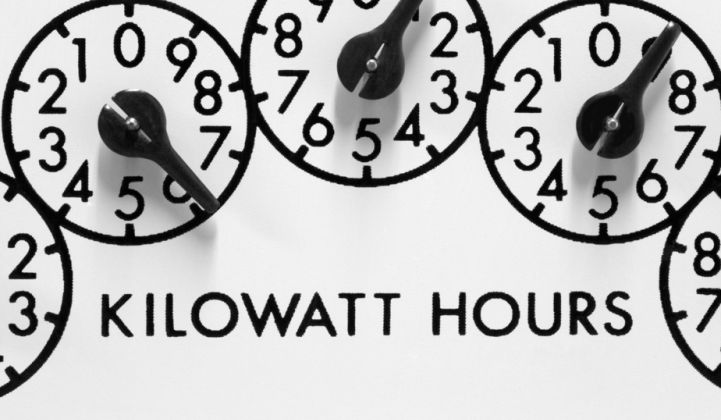Smart meters are now the rule, rather than the exception, for U.S. electric utilities. According to a new report from the Edison Foundation, a utility-funded think tank, the country had installed 65 million smart meters as of 2015, and that figure is projected to rise to 70 million by the end of 2016, making up more than half of all households in the country.
Edison’s latest data on the blooming U.S. advanced metering infrastructure market only includes meters that can “measure and record electricity usage data hourly, or more frequently, and allow for two-way communication between the electric companies and their customers.” That excludes so-called “drive-by” meters, or automated meter reading (AMR) systems, which account for tens of millions more customers across the country.
Since they now outnumber their AMR or electromechanical ancestors, “smart meters are the new business as usual” for utilities, the report declares. “Electric companies across the U.S. are leveraging smart meter data to better monitor the health of the energy grid, more quickly restore electric service when outages occur, integrate distributed energy resources, deliver energy information to customers, and provide smart pricing options to customers.”
The report is a treasure trove of data, with breakdowns of deployed and projected AMI rollouts for 45 individual utilities, along with details on their plans. In terms of existing deployments, California utilities Pacific Gas & Electric and Southern California Edison top the list with more than 5 million smart meters apiece, followed by Florida Power & Light with 4.9 million and Texas-based Oncor with 3.4 million.
On the list of utilities with big advanced metering infrastructure (AMI) plans, Chicago-area Commonwealth Edison has 1.8 million meters deployed out of 4.2 million in the works, and New York’s Consolidated Edison is deploying 3.6 million smart meters by 2021, although it only has 4,100 in the field so far.
Investor-owned utilities across the country had installed 49.5 million smart meters as of 2015, and had plans to add 3.3 million or so more this year, making them the largest investor in AMI so far. But municipal utilities and electric cooperatives, which serve roughly one-third of the country, are also picking up the pace, with 16.1 million meters deployed as of 2015 and plans to add 1.1 million this year.
The data comes from the Institute for Electric Innovation’s 2015 Smart Meter Survey, which uses utility member surveys, U.S. Energy Information Administration filings, and Department of Energy smart grid investment grant data to compile its totals.

Source: Institute for Electric Innovation
Just how far along each utility is with these next-stage AMI use cases varies widely, of course. Some have largely stuck with the basic function of smart meter as digital cash register. Others have turned on expanded features like outage detection or customer data-sharing, whether in Department of Energy-funded pilot projects or, more rarely, as full production platforms supported by utility economics.
Only a few have started to incorporate AMI data into their grid-facing systems like distribution management systems (DMS), demand response management systems (DRMS) or distributed energy resource management systems (DERMS). That makes sense, given that only the first of these software platforms, the DMS, is standard issue across investor-owned utilities and moderately prevalent among munis and co-ops. Smart meters can be useful sensors for DMS platforms and the grid operators who run them, particularly in providing end-of-line data for conservation voltage reduction or volt-VAR optimization programs.
DRMS and DERMS are more specialized platforms designed to manage customer demand-side resources and distributed generation, respectively. Only a few states have started to adapt their energy regulations to require this kind of two-way exchange of data and energy between utilities and their customers, with California, Hawaii and New York being the furthest along. But smart meters are expected to play a major role in this new energy landscape, since they sit at its intersection.
GTM Research has projected that the global market for AMI infrastructure, software and analytics will reach $10 billion by 2021, largely based on the need to manage the fundamentals of new deployments, as well as to store and manage the data flooding in from them.
Much of this work is being done through the efforts of big AMI players such as Silver Spring Networks, Itron and Toshiba’s Landis+Gyr, or meter data management system providers like Siemens’ eMeter and Oracle’s DataRaker, or system integrators like IBM or Accenture. Then, of course, there are plenty of startups with distributed intelligence and data analytics technologies they’re making available to utilities -- or to third parties that want access to AMI data to do work on the customer side of the meter.



